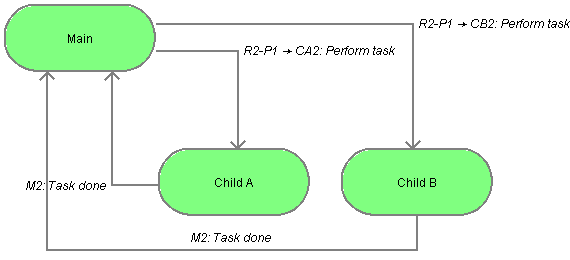

 Friday, 13 June 2008
Friday, 13 June 2008OOA96 introduced the concept of polymorphic events into Shlaer-Mellor OOA. It allows a supertype object to define a polymorphic event which is mapped to events associated with subtype object lifecycle models. A polymorphic event is generated without the need to know which subtype object is associated with the polymorphic event's supertype object. A mapped event is either a lifecycle model transition event (known as a true event) or another polymorphic event where the subtype object is itself a supertype object in another subtype-supertype relationship. Obviously, mapped events can't be assigner model events or creation events since a supertype and subtype object instance must exist for a polymorphic event to be routed. Polymorphic events and their corresponding true events may or may not have the same meaning.
OOA10 defines a new type of event destination called a polymorphic destination for encapsulating a set of polymorphic events associated with a specific subtype-supertype relationship. It defines the label prefix for a polymorphic destination as the subtype-supertype relationship ID followed by a -P suffix, e.g. R2-P. This eliminates the need in OOA96 to use a * suffix when referencing polymorphic events since the -P suffix performs the same function. Polymorphic destinations are the only event destinations that do not appear on communication models. However, true events do appear on communication models with a prefix indicating the polymorphic event which is routed to the true event, e.g. R2-P1 → CA2: Perform task. OOA10 uses a right arrow rather than the equals specified in OOA96 since an equals suggests a bidirectional relationship which doesn't exist.
Since polymorphic events are associated with a subtype-supertype relationship rather than a supertype object in OOA10, a polymorphic event always results in one and only one true event being generated. A polymorphic event in OOA96 (and Executable UML [xtUML02]) results in one and only one true event being generated per subtype-supertype relationship that the polymorphic event's supertype object participates in. However, Kennedy Carter (for Executable UML [xUML04] and Shlaer-Mellor before this) defines significantly different semantics for polymorphic events. They allow a polymorphic event to be received by all state models in the subtype-supertype hierarchy including the initial supertype object. Furthermore, they require that any actions that are performed in a supertype object complete before the polymorphic event propagates down into subtype objects. This definition of polymorphic events is not supported in OOA96, OOA10 or OOA Tool.
A simple example model showing polymorphic events in action is given below, starting with the Object Information Model:
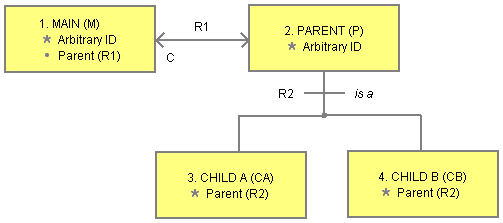
the State Transition Diagram for Main next:
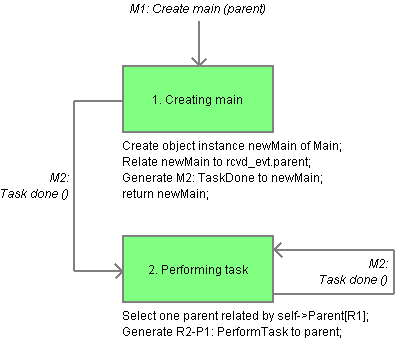
followed by the State Transition Diagram for Child A:
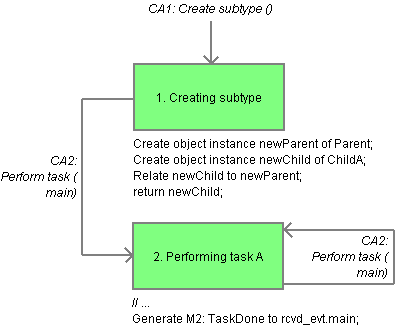
and Child B:
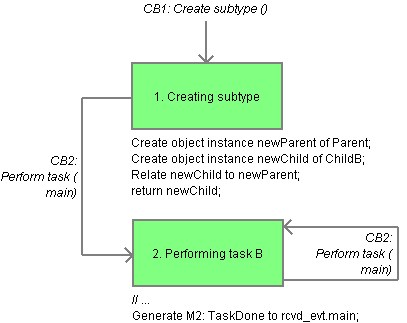
and finally, the Object Communication Model showing communications between Main, Child A and Child B:
